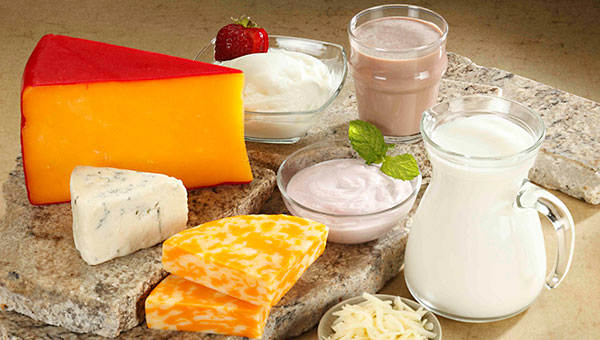Hippocrates famously wrote, “Let food be thy medicine and medicine be thy food.”
As health professionals, it’s vital that we share the unique health benefits of foods with patients, especially when talking about dairy foods like milk, cheese and yogurt. Dairy offers three of the four nutrients of public concern including vitamin D, calcium and potassium, a high-quality protein and proven health benefits. As a RDN and chef, I feel proud recommending three servings of dairy to both adults and children, and so do the recently released 2015 Dietary Guidelines for Americans (DGA).
Dairy also has unique culinary properties. Let’s discuss a few of those properties, plus some tips to help patients get more dairy in their diet.
What better place to start than with the benefits of butter?
Butter
As a natural product of churning pasteurized cream, butter adds body, depth and a silky-smooth mouth feel to the foods we love. Butter also adds great flavor to foods children may be hesitant to try – think Brussels sprouts. Although there are many uses for butter in the kitchen, here are my top picks:
- Adding a teaspoon of butter to freshly cooked vegetables, stirred through hot rice or placed on top of a grilled chicken breast, couldn’t be easier.
- To infuse flavor and add mouth feel, add butter to neutral-tasting vegetable or canola oil because of their higher smoking point as you sauté. This keeps the milk proteins from burning too quickly. For pure butter cookery, clarified butter or ghee may be your best bet.
- In cookies and cakes, butter prevents gluten formation, keeping items tender and soft.
- Pie crust is different. In addition to gluten prevention, the water in butter will evaporate as the crust cooks. This creates steam, leaving tiny sheets of flaky, buttery crust.
Milk
Milk has many different roles in the kitchen and on your plate; it can help you fill nutrient gaps whether you add it to your cereal, drink it as your beverage or mix it in your casserole. For me, my day usually starts with a hot cappuccino. But what makes a good cappuccino? Let me share my top tip – milk’s unique ability to foam:
- Milk proteins and milk fats add the texture and form the foam. Milk proteins stabilize the air bubbles, while milk fats cause destabilization, but add great flavor and mouth feel.
- Skim milk is fat-free and will give you the best foam, but with little flavor. Whole milk has the best flavor, but with the least foam. Recommending fat-free skim milk to your patients not only aligns with current guidelines, but builds more trust as a source of practical information.
Cheese
For a food made with just few simple ingredients, there are thousands of different types of cheeses. Cheese is an excellent source of calcium, high-quality protein and phosphorus, helping build and maintain healthy bones. Here are my cheesy tidbits:
- Shredded cheese from the block always melts better than sliced cheese, due to increased surface area and contact with heat.
- Processed cheese is made from high-quality natural cheese containing important nutrients such as calcium, phosphorus and protein. It can also contain higher amounts of calcium than natural cheese.
Yogurt
One of my favorite fermented products, yogurt offers great nutrition and taste. The natural and active cultures in yogurt convert lactose into lactic acid, making it easy to digest (lactic acid is what gives yogurt its distinct tangy flavor). This delicious, creamy, cultured milk is a key ingredient in both savory and sweet dishes. It’s also a great source of both pro and prebiotics, which help with digestion, gut health and gut inflammation.
- Yogurt’s mild acidity and calcium content act as natural tenderizers and don’t toughen meat as strongly acidic marinades do.
- When thinking about dips, salad dressings or sauces, use yogurt as a substitute for higher-fat ingredients such as oil or mayonnaise. This will help your patients save on calories and easily boost their nutrient intake.
- For an extra protein, recommend low-fat Greek yogurt for up to 20 grams of protein per cup compared to about 14 grams for plain yogurt.
- Baking cakes or other sweets with yogurt adds moisture and tang. Because yogurt is thick, you will need less flour in baked goods, producing less gluten and a softer texture.
I hope these few tips will help your patients incorporate more dairy foods into their recipes. The DGA continue to recommend dairy foods because of their significant nutrient contributions to healthy eating patterns. Help encourage your patients to get their three servings of dairy every day.
Learn more about the health benefits of dairy. Discover new recipes at DairyDiscoveryZone.com.




